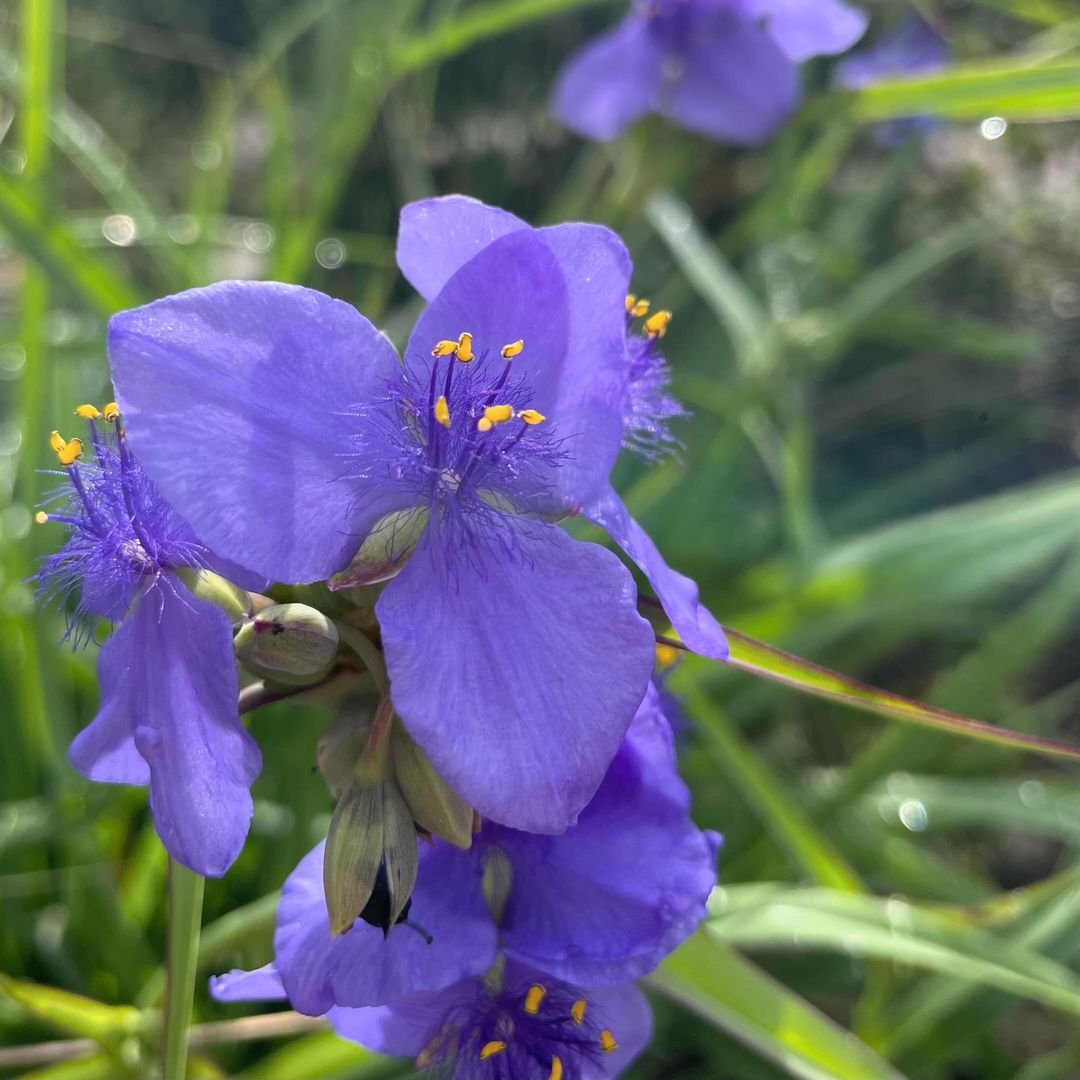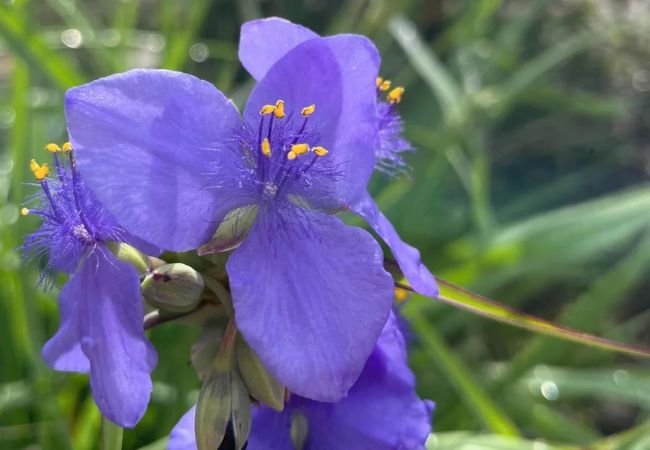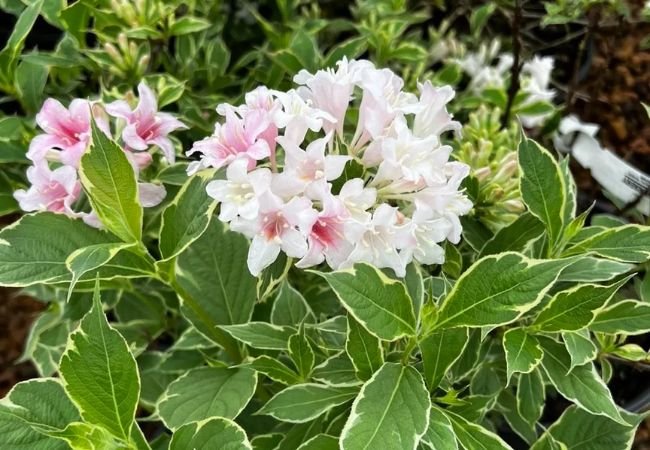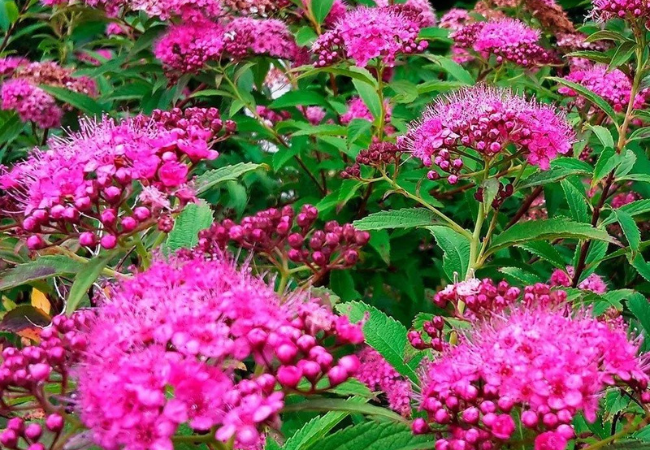Discover the beauty of Spiderwort Flowers. Learn about their varieties, care tips and uses in gardens. Perfect for gardeners seeking easy-to-grow, colorful perennials.
Spiderwort flowers, scientifically known as Tradescantia, are charming perennials that bring vibrant color and unique texture to gardens. Known for their three-petaled blooms and grass-like foliage, these hardy plants are beloved by gardeners for their easy care and long blooming period. In this article, we’ll explore the world of Spiderworts and how to grow these delightful flowers.
Here’s a detailed chart for Spiderwort flowers:
| Category | Information |
|---|---|
| Botanical name | Tradescantia spp. |
| Common name | Spiderwort |
| Plant type | Perennial |
| Hardiness zone | Zones 4-9 |
| Sun exposure | Full sun to part shade |
| Soil type | Well-drained, moist soil |
| Watering | Regular watering |
| Growth habit | Clumping, arching stems |
| Height/Spread | 1-3 feet tall, 1-2 feet wide |
| Special features | Clusters of three-petaled flowers in shades of blue, purple, pink or white; flowers open in the morning and close by afternoon; attracts pollinators; easy to grow and low maintenance |
What Are Spiderwort Flowers?

Spiderworts belong to the Commelinaceae family. They are herbaceous perennials named for the sticky, web-like sap that appears when their stems are cut. Spiderworts feature clusters of three-petaled flowers that bloom in various shades of blue, purple, pink and white.
Types of Spiderworts
Some popular Spiderwort species include:
- Ohio Spiderwort (Tradescantia ohiensis): Native to eastern and central North America
- Virginia Spiderwort (Tradescantia virginiana): Another native species with vibrant purple flowers
- Wandering Jew (Tradescantia zebrina): Often grown as a houseplant for its colorful foliage
Growing Spiderworts
Planting
- Plant Spiderworts in spring or fall.
- Choose a spot with well-draining soil and partial sun to shade.
- Space plants about 1-2 feet apart, depending on the variety.
Caring for Spiderworts
- Water regularly, keeping the soil consistently moist but not waterlogged.
- Fertilize with a balanced, slow-release fertilizer in spring.
- Cut back foliage after blooming to encourage a second flush of flowers.
For more detailed care instructions, visit the Cooperative Extension System website and search for your local extension office.
Pests and Diseases
Spiderworts are generally pest-resistant but can face some issues:
- Slugs and snails: These pests may damage young shoots. Use organic slug control methods.
- Leaf spot: This fungal disease can occur in humid conditions. Ensure good air circulation.
Uses of Spiderworts in the Garden
Native Plant Gardens
Spiderworts are excellent for native plant gardens:
- Use in naturalized areas for a wildflower look
- Plant in rain gardens or along water features
- Incorporate into pollinator gardens to attract bees and butterflies
Perennial Borders
Spiderworts work well in mixed perennial borders:
- Use as a mid-height plant in border designs
- Combine with other native perennials for a cohesive look
- Plant in groups for a more dramatic effect
Shade Gardens
Spiderworts are valuable in shade gardens:
- Use to add color to shaded areas under trees
- Combine with other shade-loving perennials like hostas and ferns
- Plant along woodland paths for natural beauty
Container Gardening
Some Spiderwort species are suitable for containers:
- Grow compact varieties in pots or window boxes
- Use trailing types like Wandering Jew in hanging baskets
- Combine with other shade-loving plants for diverse container gardens
For container gardening tips, check out the USDA Container Gardening resource.
Fun Facts About Spiderworts
- Spiderworts are named for the web-like threads that appear when their stems are cut.
- The flowers typically open in the morning and close by afternoon, especially on hot days.
- Some Spiderwort species have been used in traditional medicine by Native American tribes.
Spiderworts for Wildlife
Spiderworts play a role in supporting local ecosystems:
- They attract pollinators like bees and butterflies
- Some species provide food for various caterpillars
- They can be part of a wildlife-friendly garden design
Environmental Benefits
Spiderworts offer several environmental benefits:
- Native species support local ecosystems
- They can help prevent soil erosion in naturalized areas
- Some varieties are drought-tolerant once established
For more information on native plants and their benefits, visit the U.S. Forest Service native plant materials program.
Spiderwort flowers, with their vibrant blooms and easy-care nature, are a wonderful addition to many garden styles. Whether you’re planting them in native gardens, perennial borders or shade gardens, these hardy plants offer long-lasting color and ecological benefits.
From their unique three-petaled flowers to their ability to thrive in various conditions, Spiderworts provide something special for every gardener. With proper planting and minimal care, you can enjoy these colorful, hardy perennials year after year. Happy gardening with Spiderworts!
For more gardening tips and plant care guides, visit usagardenhub.com.






